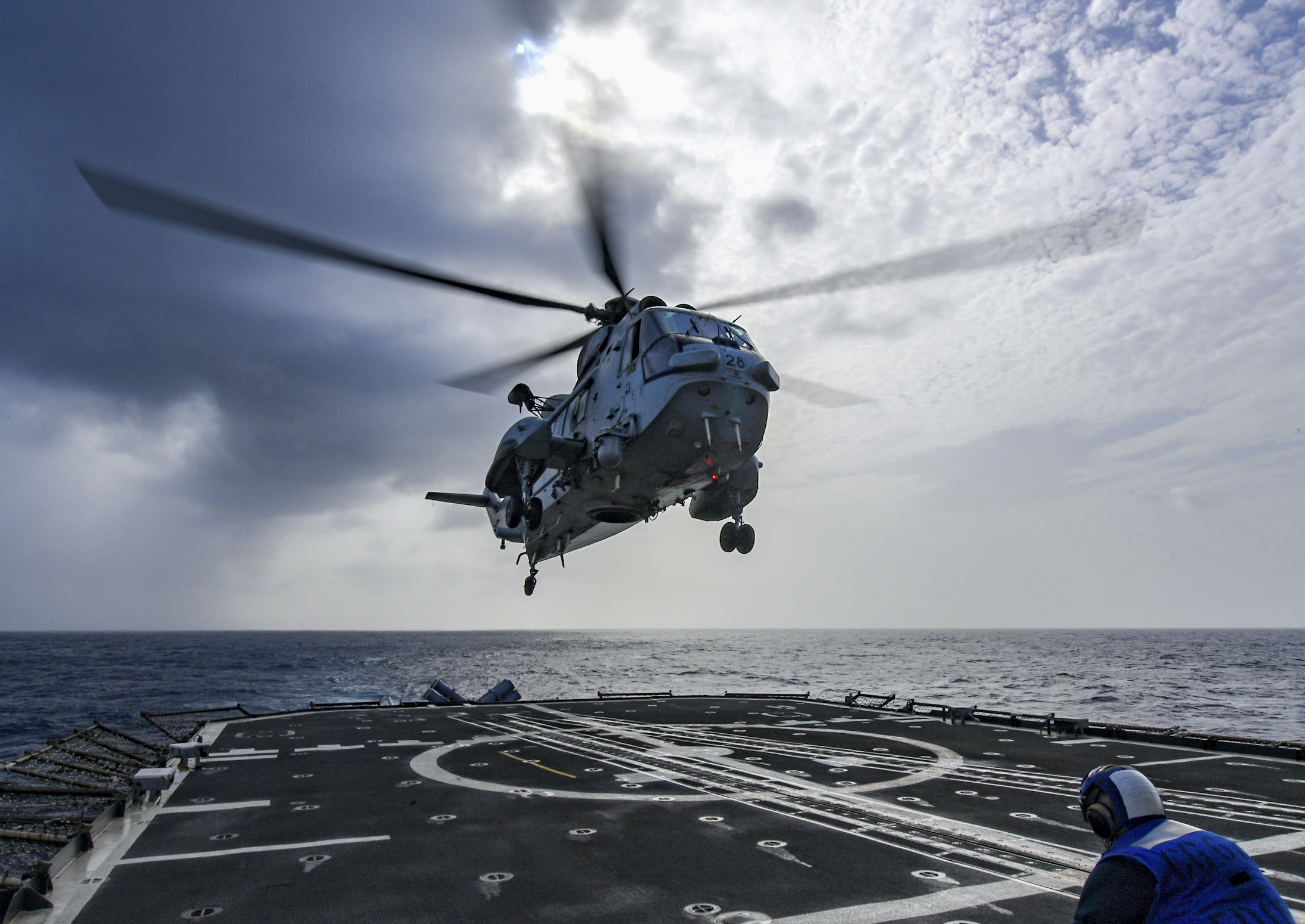
KUALA LUMPUR – While the United States is currently investing in key military capabilities to ensure its interests are protected, it’s also leveraging the asymmetric advantage of having partners and allies globally, Chief of Naval Operations Adm. Mike Gilday said Tuesday.
Gilday was responding to a question during a media call in India as to how the United States planned to address and overcome the increasing military capabilities of China that are eroding the United States’ dominance in the military sphere.
“The key piece here is allies and partners. We are not going to outspend China, so where do we focus on key capabilities that we think [of] as most important as a nation. I don’t want to get into specifics on where those investments are, but it’s focused investments that we have to be concerned about … ourselves to make sure that our own national interests are sufficiently protected,” Gilday told reporters. “But secondly, the asymmetric advantage – and I want to underscore asymmetric advantage that the United States has with its partners and allies – not only in the region, but globally and India is a supreme example of that.”
Gilday is on a five-day official visit to India, which will end Friday. Among the officials he met Tuesday to discuss US-India cooperation were Chief of Defence Staff Gen. Bipin Rawat and Chief of Naval Staff Adm. Karambir Singh.
Speaking on his meetings, Gilday said his discussions with Indian officials focused on the Indian Ocean as a strategic waterway, how the U.S and Indian navies can work together to ensure security and stability in the Indian Ocean and how they can leverage each other’s national capabilities and technologies. In regard to the evolution of cooperation between the two navies, he said the focus is on capabilities that would fill gaps in each other’s navies.
“Cyber would be among them as an area that we want to continue to refine in terms of working together, as well as high-end operations together that we want to do, in the air, on the sea or under the sea,” he said.
Gilday is expected to later visit the Malabar Phase II exercise, which began on Monday in the Bay of Bengal and concludes this Friday. Phase I of the exercise took place in the Philippine Sea and around Guam from Aug. 26 through 29.
Phase 2 of #Malabar_21 kicks off in Bay of Bengal bw #navies of 🇮🇳 🇺🇸 🇯🇵 🇦🇺
Free Open & Inclusive #IndoPacific #BridgesofFriendship #MaritimePartnership#NavalCooperation #Interoperability@SpokespersonMoD@USNavy @Australian_Navy @jmsdf_pao_eng pic.twitter.com/pGfYpQU2c9— SpokespersonNavy (@indiannavy) October 12, 2021
U.S forces involved in Malabar Phase II are Carrier Strike Group 1, which includes carrier USS Carl Vinson (CVN-70) with embarked Carrier Air Wing 2 (CVW 2), cruiser USS Lake Champlain (CG-57), destroyer USS Stockdale (DDG-106) and a P-8 Poseidon maritime patrol aircraft.
“Malabar 21 improves the compatibility of our forces in support of our mutual desire for unmatched maritime security in the global commons,” Carrier Strike Group 1 commander Rear. Adm. Dan Martin said in a U.S. 7th Fleet news release. “Unit integration during complex task group maneuvers further demonstrates our ability to effectively work with our Indo-Pacific allies and partners and win in any contested maritime environment.”
Japan’s participation consists of helicopter destroyer JS Kaga (DDH-184) with destroyer JS Murasame (DD101), which are on deployment as part of the Japan Maritime Self-Defense Force’s Indo-Pacific Deployment 2021 (IPD21) task group. Both Kaga and Murasame have come off the Japan-India Maritime Exercise (JIMEX) held in the Arabian Sea last week, when the two ships exercised with Indian Navy destroyer INS Kochi (D64), frigate INS Teg (F45), Indian Navy MiG-29K fighters and P-8I maritime patrol aircraft.
Australia’s Malabar contingent features frigate HMAS Ballarat (FFH155) and replenishment ship HMAS Sirius (O266), while India is participating with destroyer INS Ranvijay (D55), frigate INS Satpura (F48), P-8I maritime patrol aircraft and a submarine.
In regard to the potential of expanding Malabar to involve other countries outside the Quad – the informal alliance that includes the U.S., Australia, India and Japan – Gilday said it would be up to the partners in the Quad to discuss the matter.
“There are multiple exercises that go on in the Indo-Pacific and globally every year where we bring like-minded allies and partners to work together, so I wouldn’t just limit the value of exercises to Malabar. There are many exercises that go along here that involve a host of other nations,” Gilday said.





